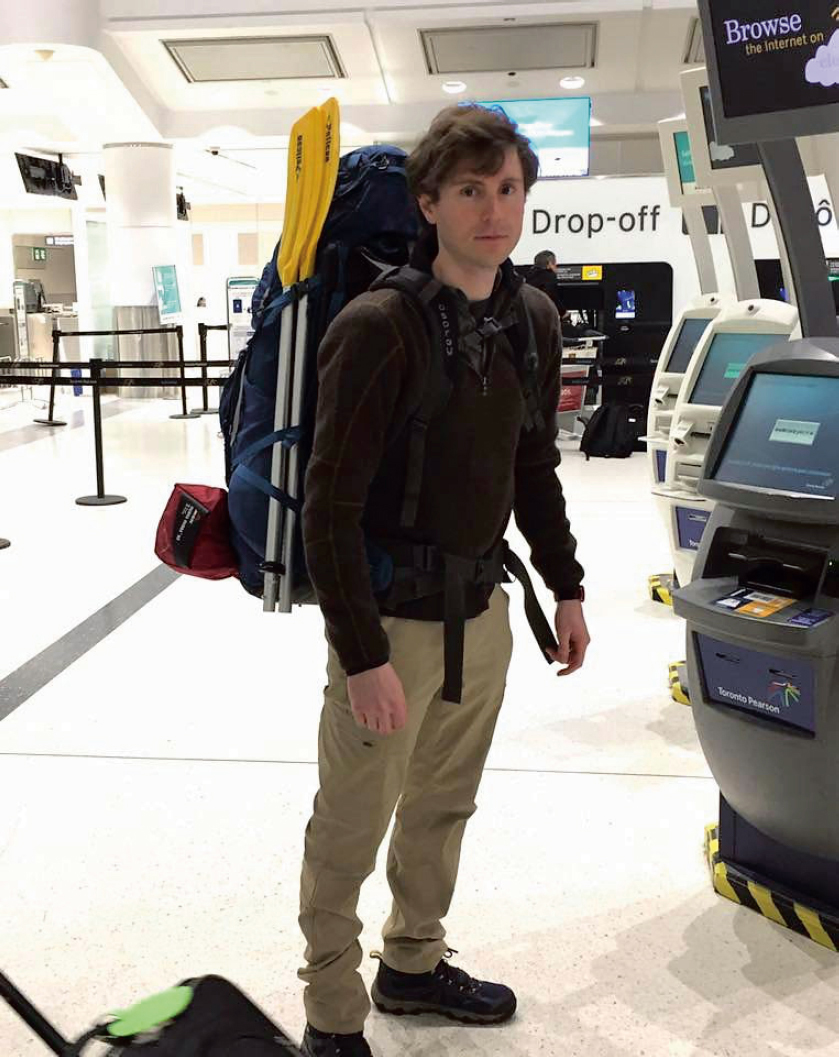
At the airport bright and early on May 13, ready to fly to the Yukon.
Photo Credit: Aleksia Wiatr.

Hiking through the Richardson Mountains at the start of my journey.
Courtesy Alone Across the Arctic, photo by Martin Wojtunik.

“It wasn’t long into my lonely trek before I came across tracks of an unsettling size, sunk deep into the gravel roadway.”
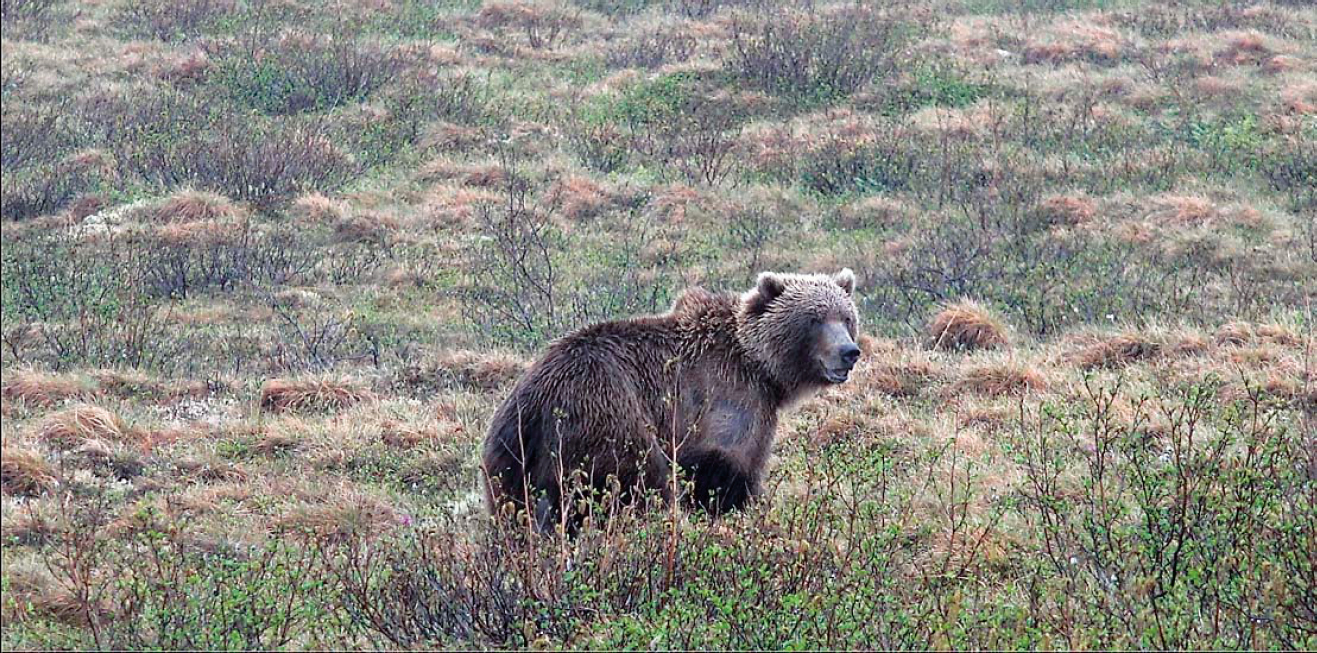
A grizzly I crossed paths with while hiking along the Dempster.

Poling up the Mackenzie River under grey skies.

A trio of Sandhill cranes with their distinctive red-bands around their eyes, along the Mackenzie’s sand banks.

It can be somewhat unsettling to find a muskox staring you down outside your tent at night.
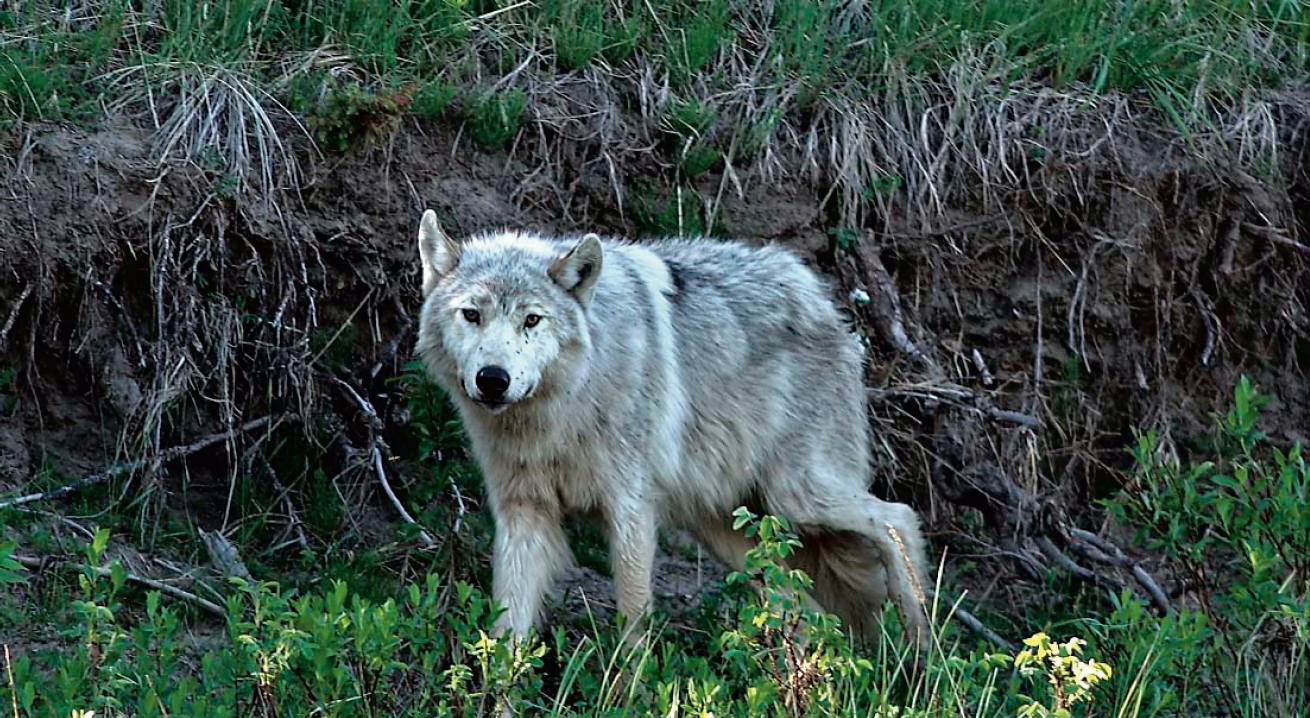
“One beautiful arctic wolf, his white coat streaked with black and grey, was particularly curious about me. He was a big, lanky animal, and followed me along the riverbank for over a kilometre as I paddled along.”

Hauling and pushing the canoe through the first of many logjams on the upper reaches of the Hare Indian River.

Camping on the windswept coast of the world’s eighth largest lake, Great Bear.
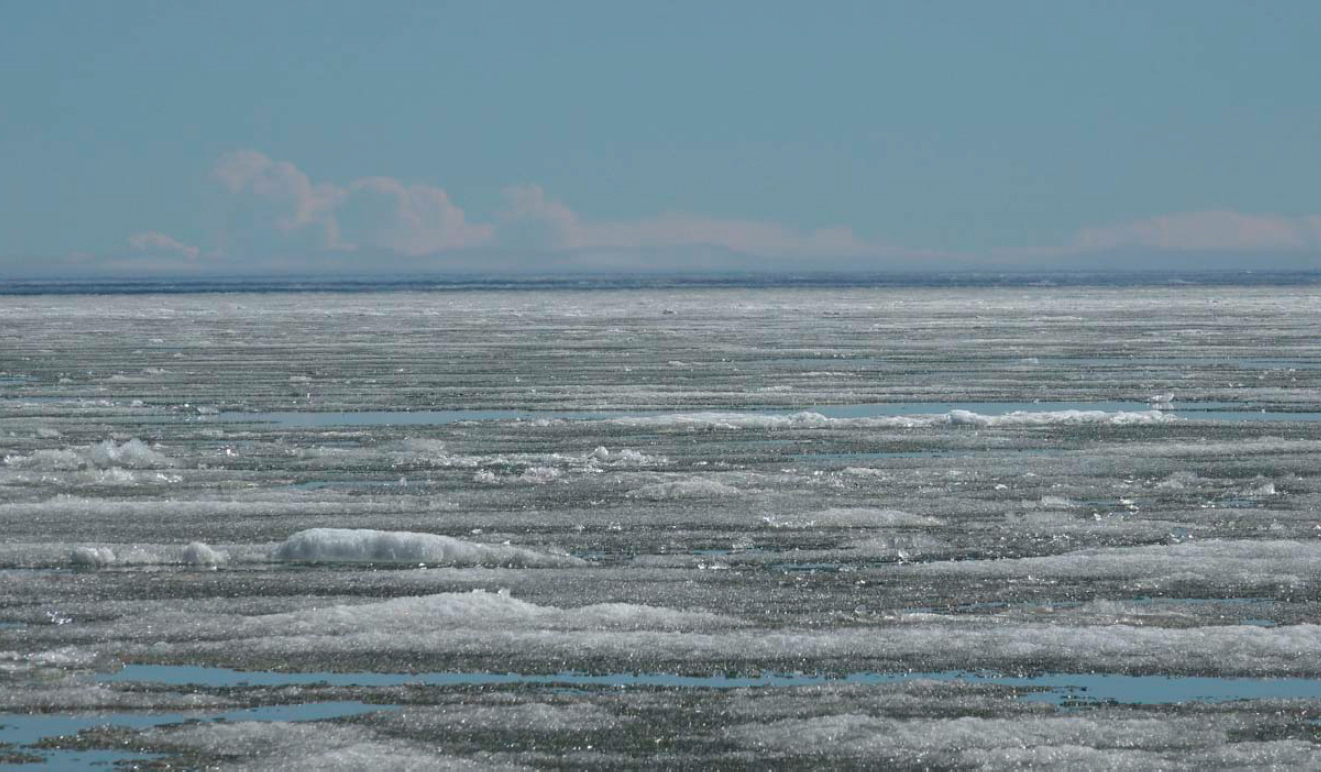
My route appears to be blocked by ice.

Trying to break a passage through the ice.

After several days stuck in the ice, a dream-like rainbow formed across the ice labyrinth, giving me hope that I might make it through.
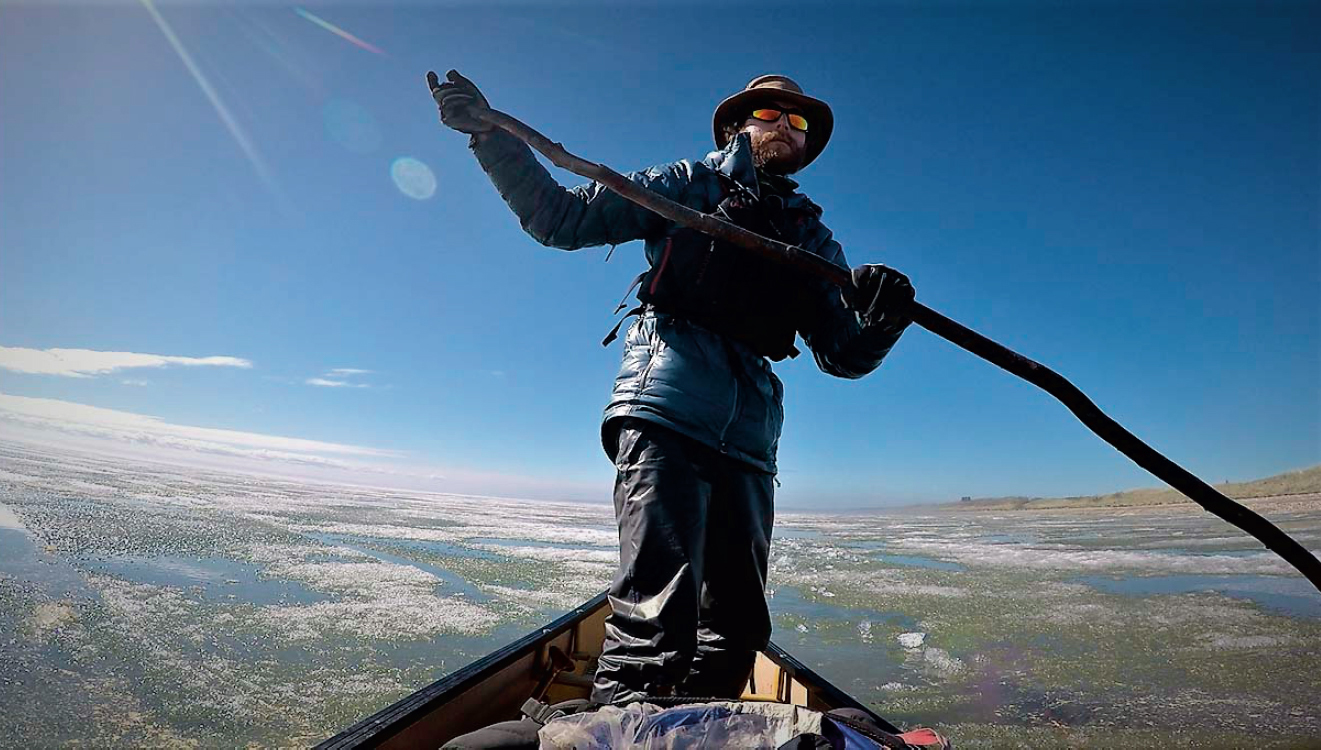
Using my pole to force my canoe across more ice.

July 6, 2017, my camp along Great Bear’s north shore, where only a few stunted, hardy spruces and willows manage to grow. My canoe, gouged and scraped by ice, sits overturned by the tent, while the two barrels rest near my campfire.
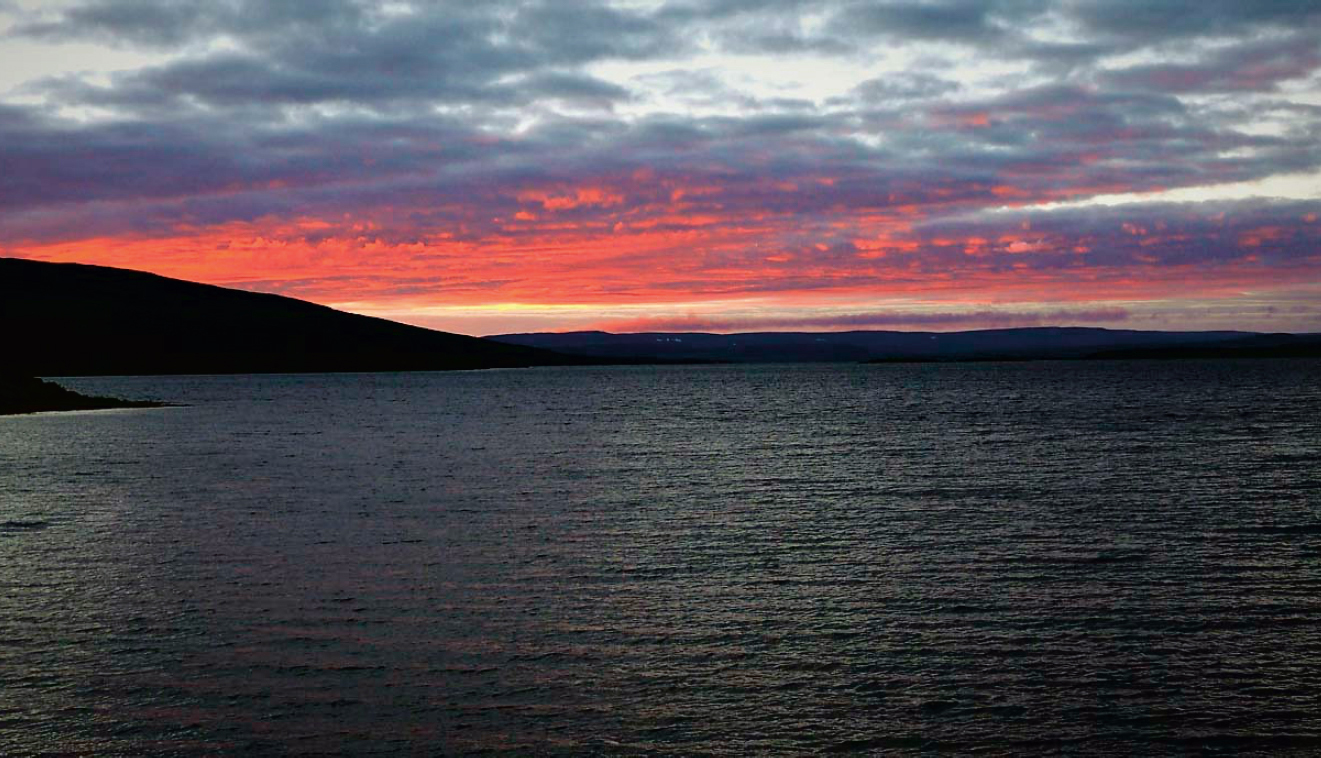
The surreal Dismal Lakes at night. “Across the dark waters the midnight sun, having dipped below the mountains, filled the cloudy sky with an eerie red glow.”

Enjoying the (temporary) end of my upriver travel as I race downstream through a canyon on the Kendall River.

Back to exhausting upriver travel as I jump from rock to rock hauling my canoe up the powerful current of the Coppermine River.

A land time forgot, where, amid ancient boulders eons older than even the dinosaurs, a little stream crashes a path down the hillside.

Trying to maintain my balance and not twist an ankle while wading up rapids in a narrow channel connecting two lakes.

“Once I reached the top I had a good view of the river’s turbulent, roaring course over the rocks. There were two big, foaming cataracts separated by a rocky island, with large rapids above each one.”

In the haze, a pair of shaggy, prehistoric-looking muskox wander the ancient landscape.

Portaging around the Hanbury River’s many dangerous canyons took four trips per canyon, the first with my backpack, two more with each barrel, and a final one with my canoe.

Climbing along the cliffs of the Hanbury River while guiding my canoe below with a rope.

The gusting wind made paddling impossible, so I strapped on my waders, grabbed the bow rope, and started dragging the canoe behind me, vast sandy barrens stretching off into the distance.

That look you get when a big wave throws ice-cold water in your face while paddling rapids.

Thunder clouds mass on the horizon as I huddle in my tent for another cold, stormy night in late August.

A family of caribou stare at me as they wander the tundra while snow geese head south for warmer climes.

The moon rises above the ancient hills overlooking the last of the Thelon’s lakes, where I was wind-bound.

September 4, 2017. A herd of muskox graze on the tundra now ablaze with bright fall colours.

Four months later, the end of my journey; looking across the tundra and wondering if we will find the courage and political will to preserve large tracts of wilderness. There’s magic in the wild, if you allow yourself to feel it.
Courtesy of Alone Across the Arctic, photo by Mike Reid.